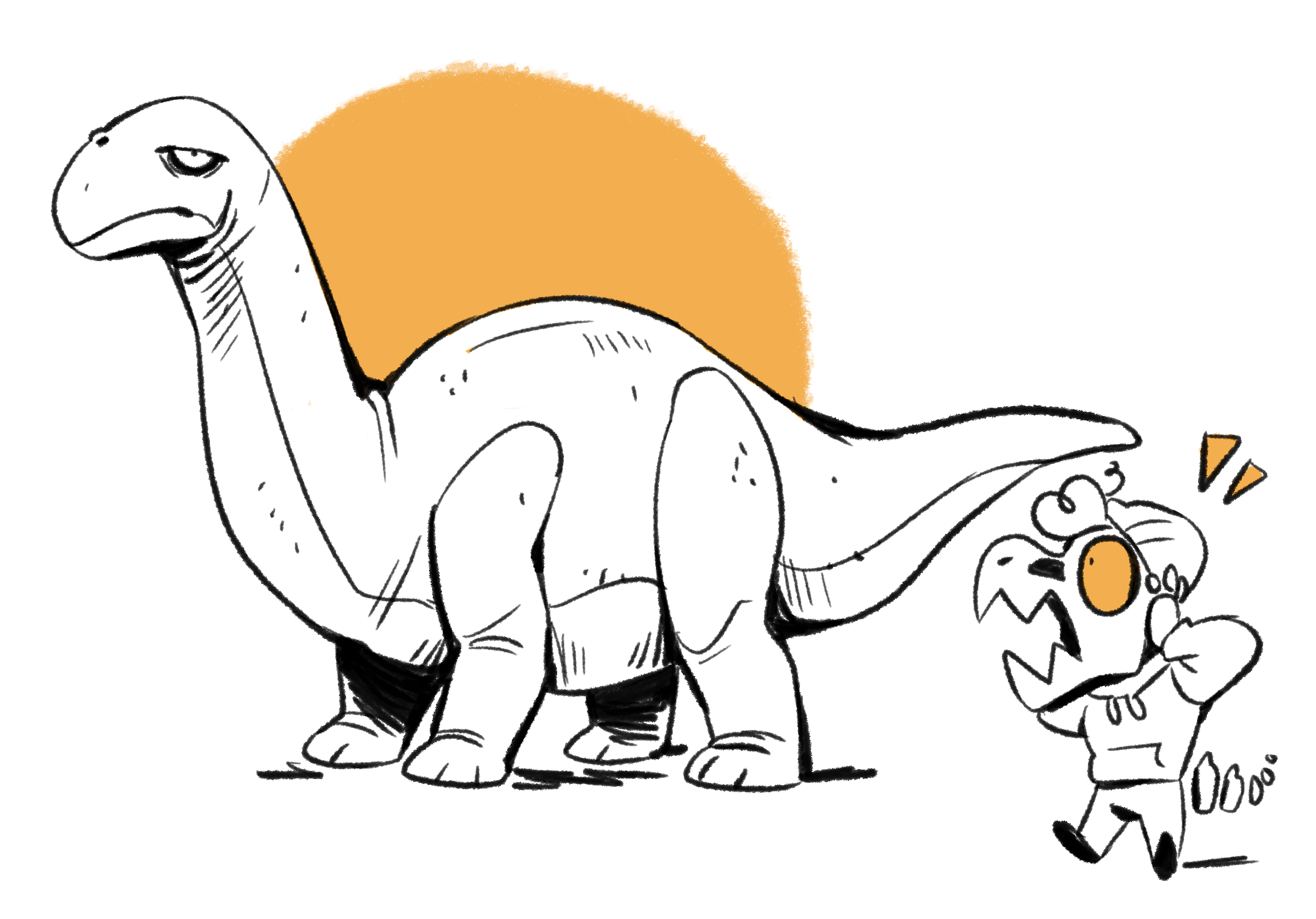
So, the other night, I was poking around for info on the Sinclair fibreglass dinosaur statues that were shown at the 1964 World’s Fair. You know, as you do. After seeing photos of them, they struck me as familiar–in fact, exact replicas of them were used in the Calgary Zoo’s Prehistoric Park, a fun area in the zoo with dino and geological structures, which naturally was always a favourite. So I was curious about these sculptures, but as I was looking for info about them… I got completely sidetracked. And yet, still ended up right back where I started–in Calgary, my home town.
I ran into this blog post on a site called Pseudoplocephalus, which is a review on the Prehistoric Park (a good one if you want to get the gist of the park!). However, the post also mentions there once was an older dinosaur park that had over 50 statues which were destroyed. I was immediately taken aback, because I had never heard of this before. The post also talks about a certain big sauropod statue…and with that, I was instantly transported into a childhood memory.
Once upon a time, I was visiting the zoo, and I had found my way to the back end of the park where I didn’t often go. And there I ran into it…a giant statue of a sauropod. I remember distinctly thinking how out of place it felt–the Prehistoric Park with dino statues was at the other end of the zoo…so why was this big, weird looking dino statue here? It was one of those old, strange memories that just sat at the back of my brain for years, leaving me wondering if it was really a memory or just an odd dream.

But no, it was real! Because that was Dinny–the last survivor of the old dinosaur park. Called the Natural History Park, it was opened on St. George’s Island, an island sitting in the Bow river, in 1937 (it’s also sometimes called Prehistoric World, but I’m going to keep calling it the Natural History Park for this post). It contained a hefty amount of dinosaur and prehistoric animal statues, and though I can’t find an exact number, most put it at something over 50 sculptures. It’s hard to say because I don’t think there was a proper record of them–at least, not one I could find.
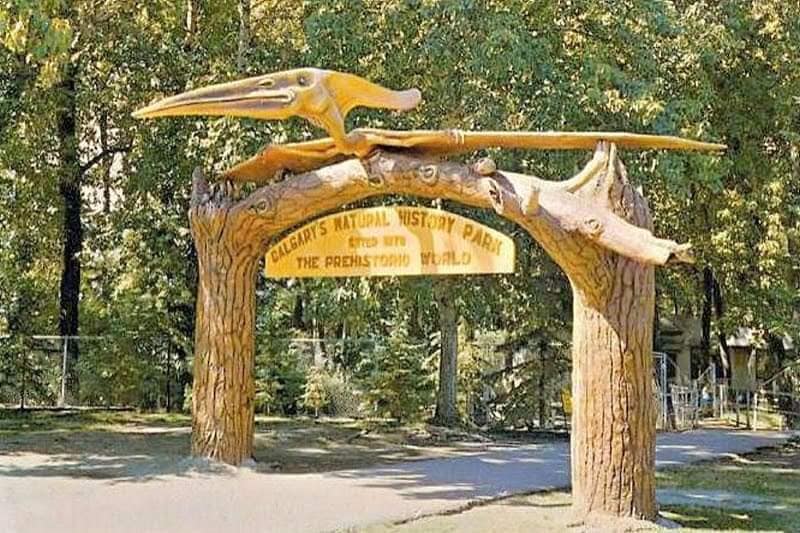
Dinosaur parks are kind of a… thing. Nowadays, when you think of a place full of funny looking cement dinos scattered in the trees, you probably picture something like a roadside attraction or tourist trap. Originally, these dinosaur parks–gardens or parks with dinosaur statues–were for educating purposes. It’s easy now, of course, to picture what a dinosaur looks like. We see them enough in popular media, in books, in paintings, in movies. But imagine that wasn’t so–in fact, imagine that most people aren’t familiar with what a dinosaur is at all. The dinosaur parks were conceived as a way to bridge the general public with science, engaging regular park goers with the awe of what these creatures were–even if, sometimes outdated.
The very first dinosaur park was, of course, the Crystal Palace Geological Court in London. (Are dino statue parks my newest fixation, I guess? Yes. Is this an excuse to talk about the Crystal Palace dinosaurs? Also yes.) Built to fill out the new gardens of the moved Crystal Palace, the Geological Court was sculpted by Benjamin Waterhouse Hawkins in 1854. These statues are infamous, often widely mocked for their inaccuracies–the Iguanodon nose horn a very popular example. But, to be fair, at the time this was as accurate as could be understood with the material they had (which was mostly some jaw bones and vertebrae).
(Maybe I’ll make a post about these things one day, but if you wanted to know more about the Crystal Palace dinos, check them out here.)
By 1937, it had been a good few decades since the Crystal Palace park opened, and since then dinosaur parks had sprung up in a few other places. It was one of these, the Hagenbeck Zoo, that apparently inspired folks to build the one in Calgary. At the time, fossils were booming in Alberta, so it only made sense to open a dinosaur park here, and help invigorate the public interest in prehistoric life. This also made it the first ever dinosaur park opened in North America.

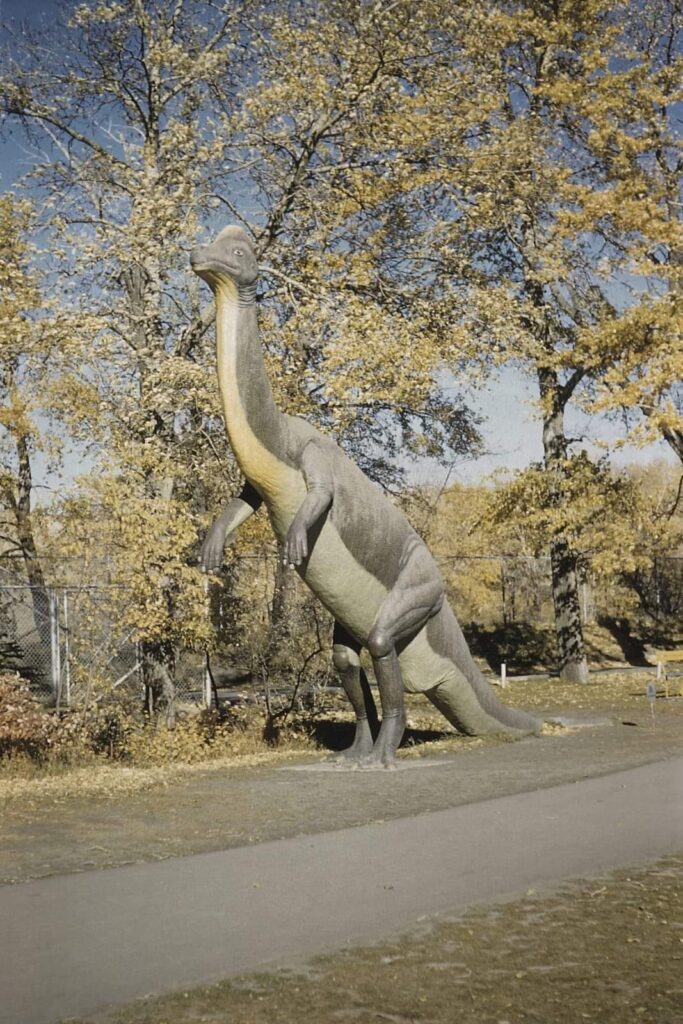
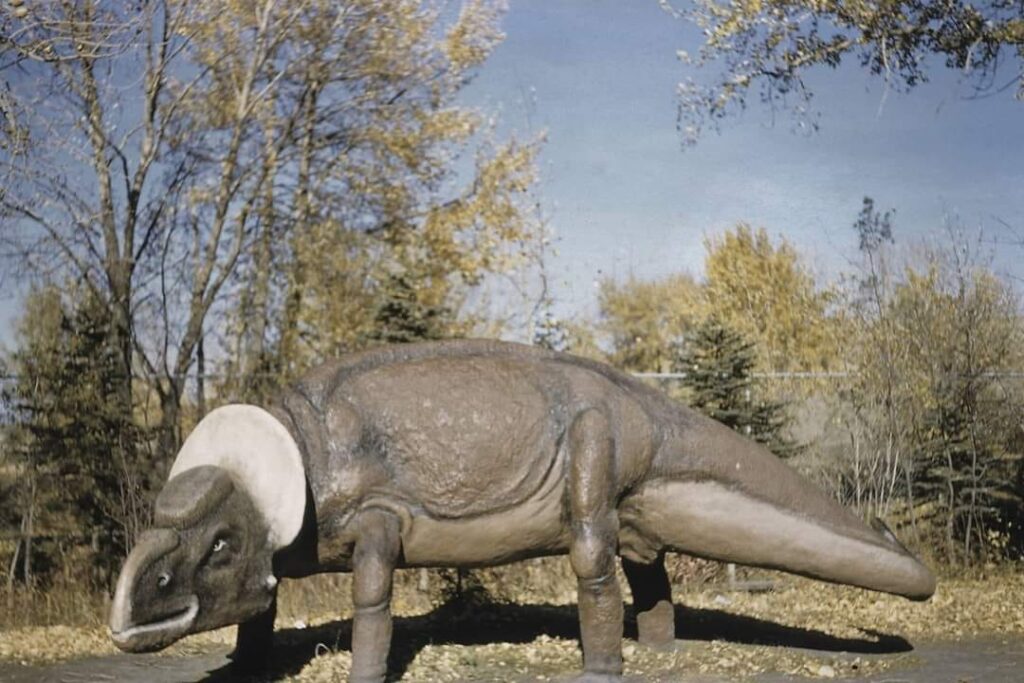
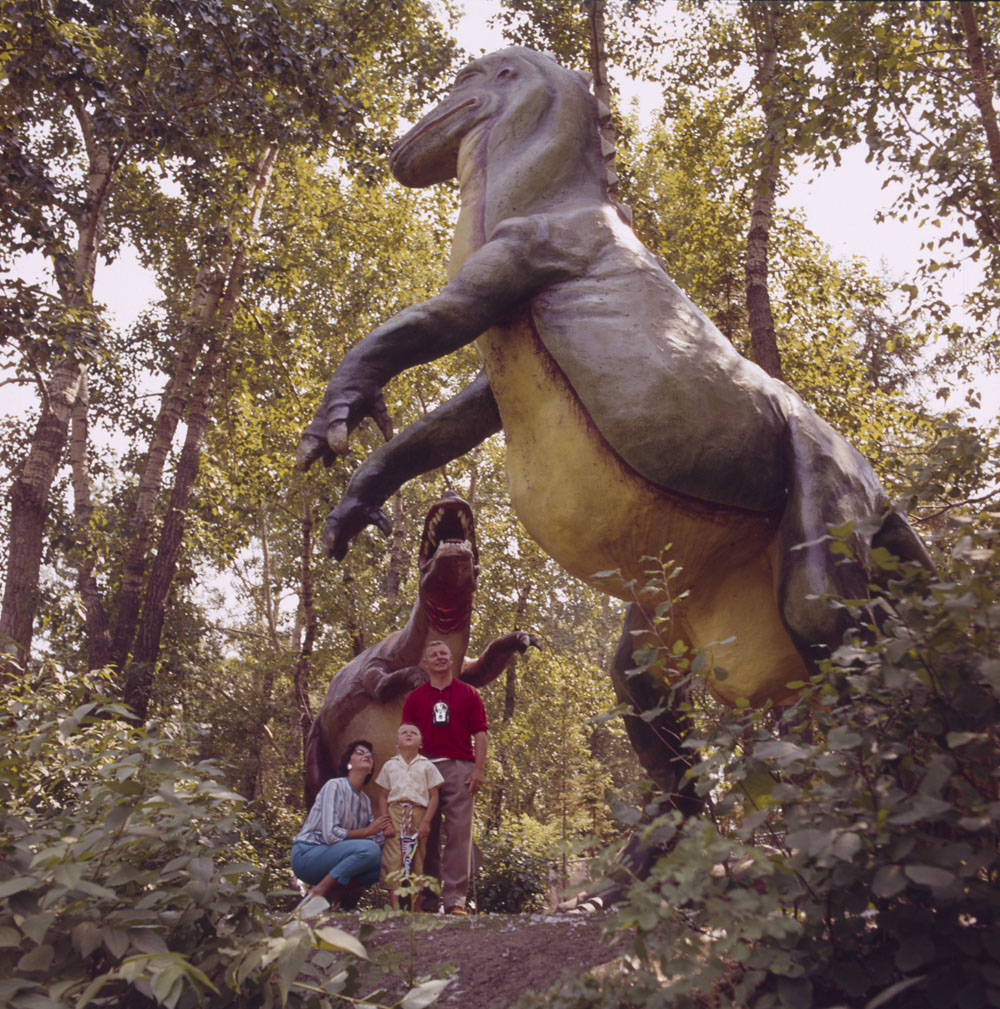
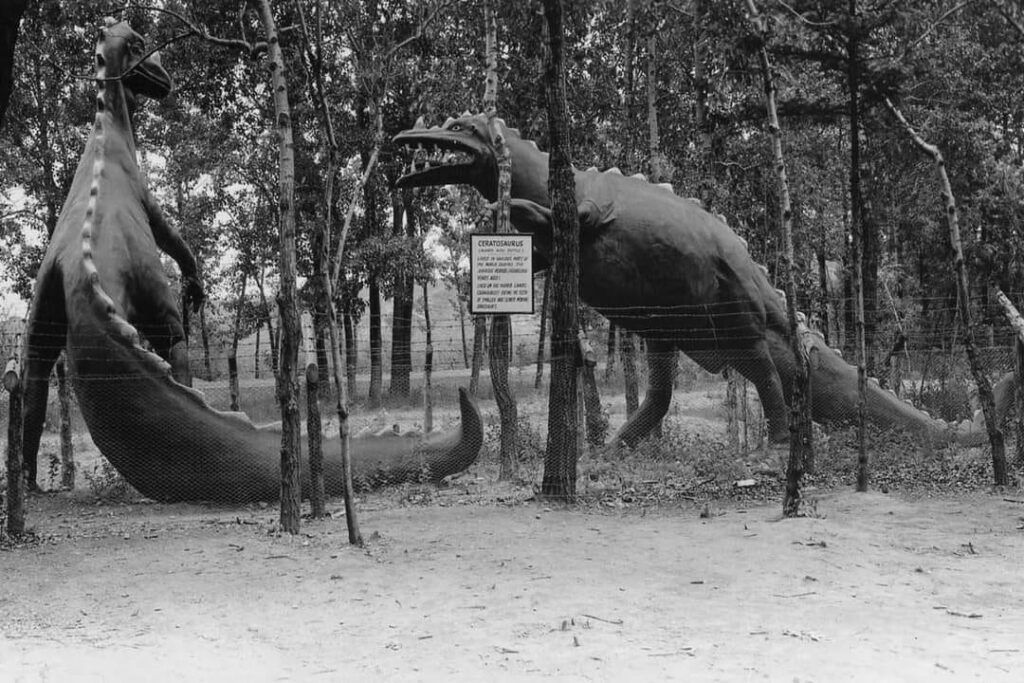


The sculptures in the Natural History Park were maybe not as meticulous as the Crystal Palace dinos, but they certainly had a lot of character. They were sculpted by a Banff artist, Charles A. Beil, and John Kanerva, the latter helping with scaling up the sculptures, and being the most involved. There was a good mix of dinosaurs and other prehistoric creatures, from the early synapsid Dimetrodon (er, sorry… Dimetrodom?) to extinct mammals like mammoths. It even appears there was a “fossil house” with a sculpted mural depicting an Ice Ace scene.
Richard Howe in the Library and Archives Canada Blog wrote a good post here summarizing the life of the park, that I recommend reading to learn more about its history.
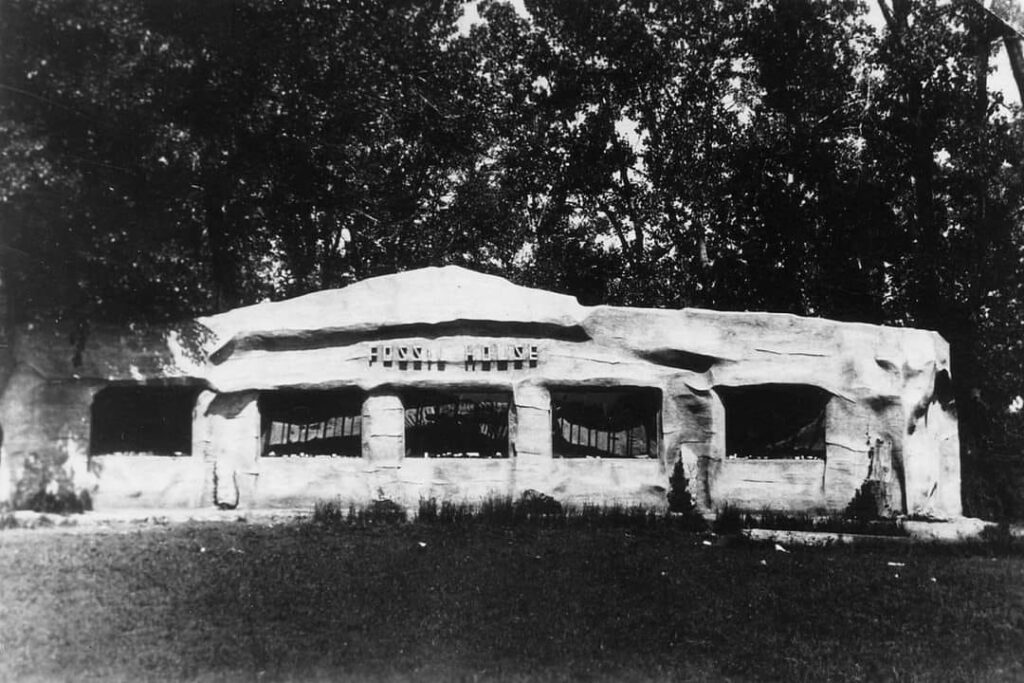
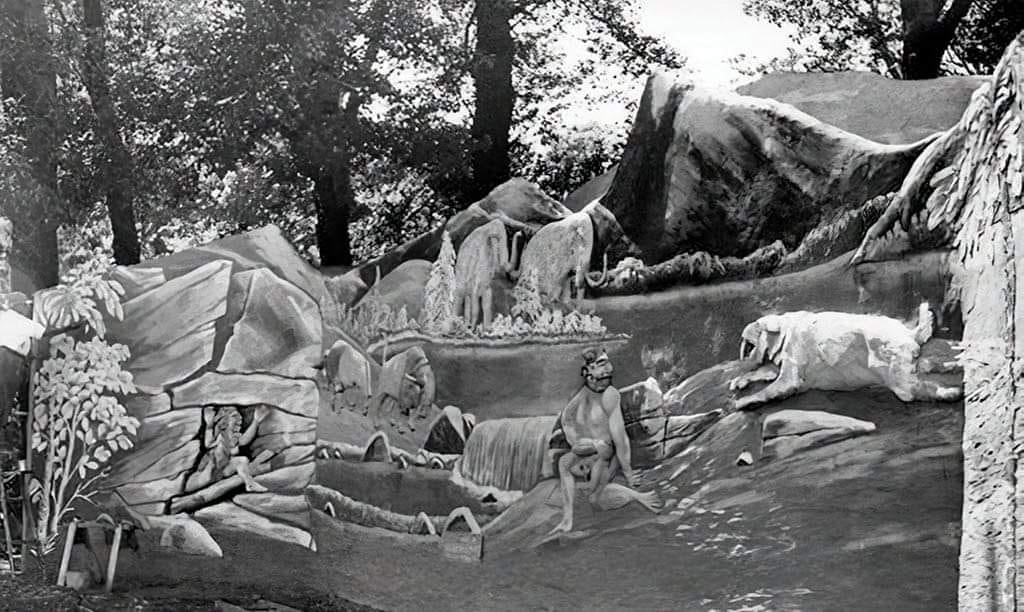

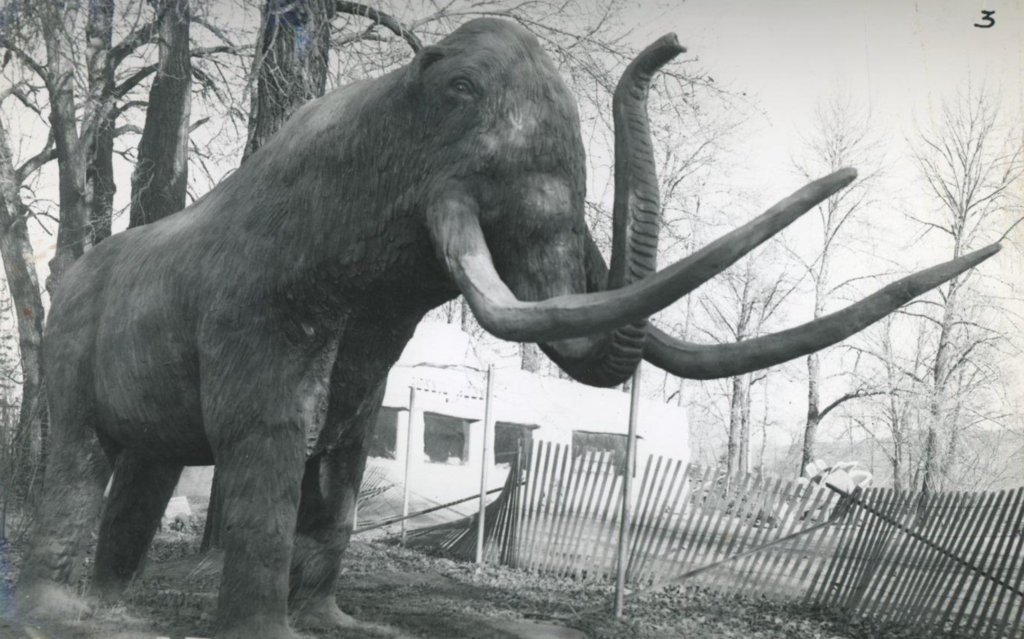

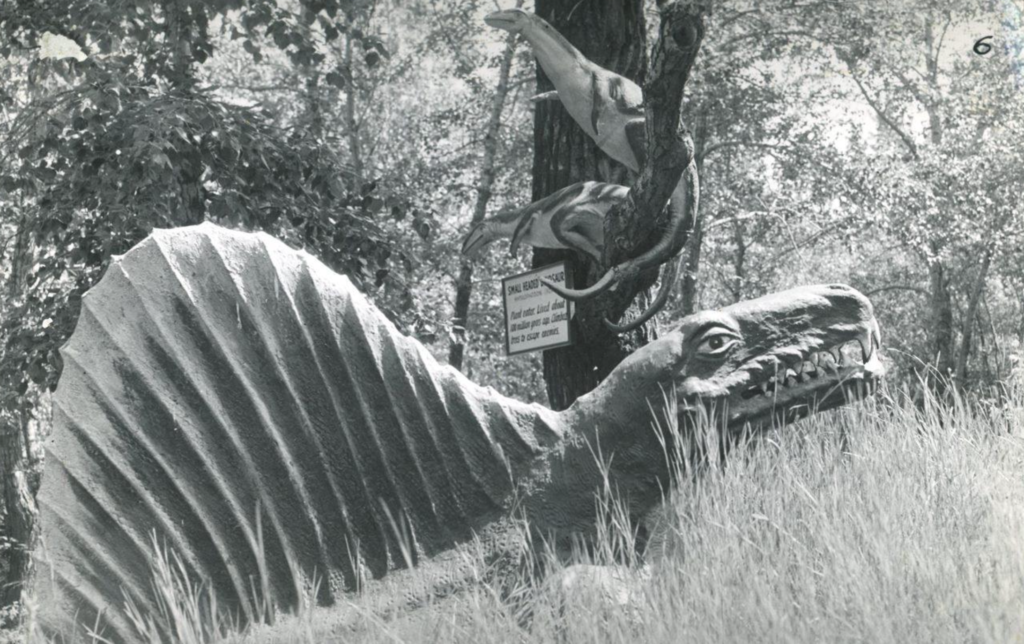
It appears that there were plaques and signs, with the names and info on on the dinosaurs along the way, which is cute. I really wanna know what species the “snake-headed dinosaur” in the trees is meant to be in the last picture here…
I also particularly love this Ceratosaurus sculpture, which looks so much like those cheap rubber dinosaur toys. And this very regal looking Corythosaurus, which always looks great for its pictures.

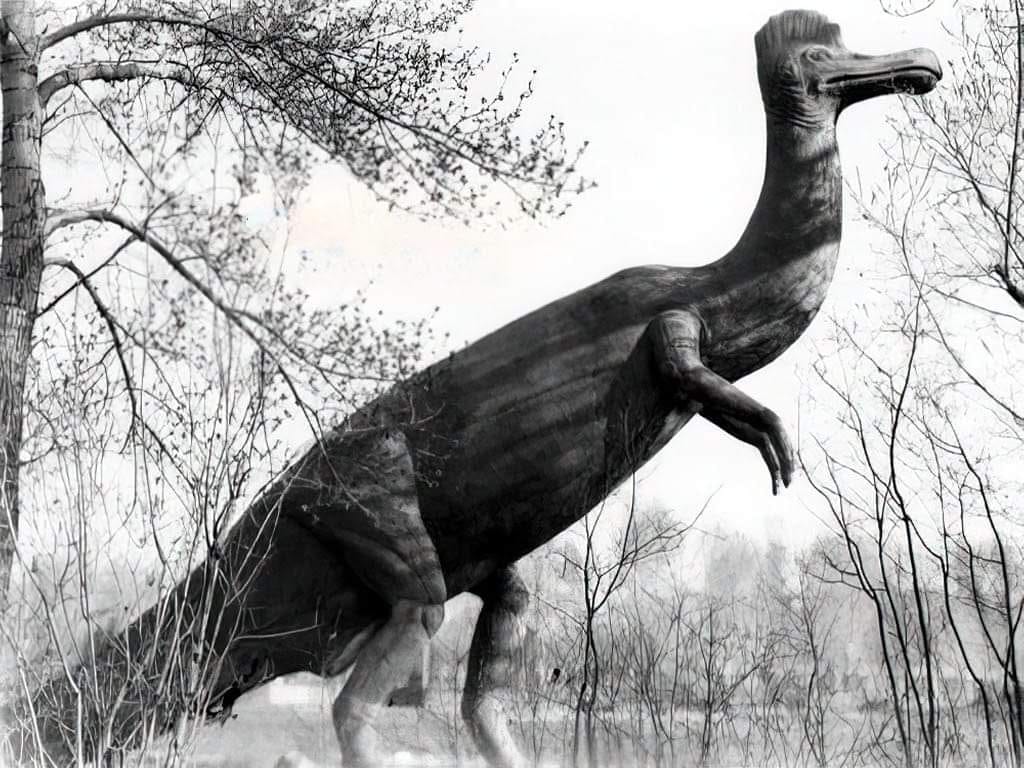
The Natural History Park existed all the way until the 80s–a good 50 year run! By that point, Dinny, the big sauropod, had become the star. He was even one of the biggest landmarks in Calgary until the Calgary Tower was built. I can imagine by then the park was very old, very outdated, and more importantly–the zoo, in the same area, was in desperate need of an expansion. When this was announced, the city promised a new dinosaur park in the zoo–I don’t know how much was said about the current Natural History Park statues, whether they were promised to be in this new park or not, but in the end, the majority of the statues were destroyed. It was too expensive for the city to move them. Only Dinny remained, the lone survivor of his brethren.
I suppose that is sad, and one might say that we should have preserved the statues, or at least kept a few more. But I think preservation is a fickle thing. I understanding keeping, and upkeeping, several large, decaying statues would be difficult. Would just the nostalgia be worth it enough to save them?
I think the true issue here is that they weren’t better documented. I think that if we cannot keep giant statues around, we should at least keep photos, or records on them. I’m sad that a lot of these statues are probably lost forever, with maybe no photos at all. And what photos we do have are little, most of them probably scattered in hundreds of tourist and visitor personal collections. I tried finding as many photos as I could to get an idea how many different statues there were, but I don’t know if I’ll ever get that full picture.
I do think the Prehistoric Park in the Calgary Zoo is a good upgrade (even though by the time it was built, the Sinclair dinosaur statues were already out of date by two decades…) But most of all, I’m glad I could randomly solve this mystery from my childhood, of where that Big Weird Sauropod statue came from, and the whole history around it!
If you know any more about the Natural History Park, have tales about it, or even photos, then please share! I’d love to learn more about it, and would even be interested in documenting the different statues (if I have time, of course…a funny concept, having time, but you never know). You can comment below or email me at tm(at)windywallflower(dot)com!
Most of the photos in this post were used from a post on a Facebook group called Calgary Rewind… I’m not positive that’s the source, though, so please correct me if it isn’t. Others come from the Library Archives of Canada.


Leave a Reply